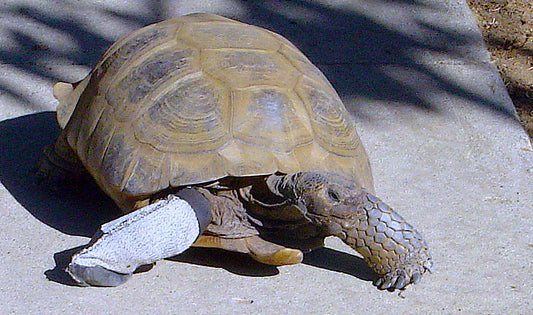By tracking age-related progressions in gene methylation patterns of dogs and comparing them with those previously observed in people, researchers have constructed a new “epigenetic clock” for translating dog years to human years.
All mammals pace their way through similar milestones, from embryogenesis to birth; then infancy, youth, and adolescence; and, finally, maturity, senescence, and death.1But every species ages at its own clip. Some compress their lives into a couple years, while others, like certain whales, take an entire century to cycle through the life stages.
Because ripening times vary widely among animals, correlating the age of one species with that of another is like comparing apples with oranges. This reality contradicts the age-old credo that we can calculate the human equivalent of a dog’s age simply by multiplying by 7.
Defining dog years
Researchers at the University of California San Diego School of Medicine recently created a formula that offers a more accurate comparison of age in humans and dogs. It is based on fluctuations in the way dogs and humans attach methyl groups to the nucleotide bases in their genomes as they advance through the years.
The methylation pattern — or “methylome” — of the cytosine–guanine dinucleotides (CpGs) is an epigenetic mark that modifies gene transcription and thereby regulates the speed at which an organism ages and reaches specific physiologic milestones.2
Not only do people and dogs age at mismatched rates, but the two species differ in their racing times between each mile marker. The comparison between them is not linear as the 1:7 years rule of thumb suggests. The data from this study, recently published in Cell Systems,3 illustrates this perfectly. While a 9-year-old dog, for instance, has the approximate genetic wear-and-tear of a 65-year-old human, a canine yearling doesn't equal a 7-year-old child, but instead a 30-year-old human ready to start a family.
Seeking vintage genes
Investigators came up with these correlations by collecting blood from 104 Labrador retrievers at different life stages, ranging from 5 weeks to 16 years. The subjects were mostly recruited at canine-centric events, such as dog shows.
Using DNA extracted from whole blood samples, a technique called syntenic bisulfite sequencing was applied to characterize CpG methylomes in regions of the canine genome that mirror those of humans. About 232,000 CpG sites have been found to be conserved between humans and dogs. Of these, 54,469 CpGs were well profiled in both species. Regions included exons, transcription start sites, and CpG chains or “islands.”4,5
The researchers looked at whether the conserved methylation alterations in dogs and humans followed a constant rate of change, and whether this tempo correlated with the lifespan of each species, as is the conventional wisdom.6,7 For this, they lined up the age of each dog with the average age of its human methylome “twin.” The canine methylomes were also compared with those previously measured in mice.8
To resolve whether conserved changes involved particular genetic regions, they coned down their study of CpG methylation sites to 7942 genes for which orthologs were present in all three species. From this, they spotted 394 genes for which methylation values showed conserved age-dependent behavior across species.
These genes occurred within five clusters, primarily developmental in function and concentrated near transcription start sites. Four of these clusters — associated with synapse assembly, neuroepithelial cell differentiation, and anatomic patterning — displayed methylation that amplified with age. The fifth cluster involved leukocyte differentiation and nucleic acid metabolism and demonstrated decreasing methylation with age.
Genetic clocks teaming dogs and people
Until now, epigenetic clocks have been used to study methylome data within a species rather than across species. But a review of established methylation values in different species reveals closer epigenetic correlations when using conserved developmental genes (less than 400 in the current study) than when casting a wider genetic net.
Analysis of the data shows that the rate of methylome remodeling is determined not only the lifespan of a species — the shorter-lived the species, the more rapid the remodeling — but also by the timing of key physiologic events.
Tracking changes in how methyl groups attach to DNA strands reveals a conserved, though nonlinear, age-related progression between dogs and people. The study also shows that dogs age more quickly than humans at an early age, then trickle along following sexual maturity.
The highest methylome similarities — and greatest epigenetics-physiology agreement —were observed when pairing young dogs with young humans and senior dogs with aged humans: It’s easier to define a dog in human years at either of these two poles. However, these same genetic comparisons during the intervening adolescent and mature stages are murkier.
One limitation of the study is that it used DNA from whole blood, for which age-dependent drops in leukocyte population occur in both dogs and people. These shifts could influence the findings. Second, the study focused exclusively on Labrador retrievers. Expanding the scope to include other breeds (canine subspecies) could modify the results.
Characterizing epigenetic changes across both breeds and species may help solve more global riddles, such as whether the timing of epigenetic changes early in life influences the overall lifespan of a species, or of a specific individual within a species.
By highlighting conserved patterns of epigenetic changes across species and throughout life, this research suggests that aging is more a continuation of development rather than a distinct process. By matching — or, rather, mismatching — those patterns among dogs and people, we now know that the common question, “How old is my dog in people years?” is not as straightforward as once thought.
Author: Joan Capuzzi, VMD
Link: https://www.dvm360.com/view/dna-debunks-age-old-ratio-for-dog-years-to-human-years
References
- Withers PC. Comparative Animal Physiology. Cole Publishing Company; 1992.
- Field AE, Robertson NA, Wang T, Havas A, Ideker T, Adams PD. DNA Methylation Clocks in Aging: Categories, Causes, and Consequences. Mol Cell. 2018;71(6):882-895. doi: 10.1016/j.molcel.2018.08.008
- Wang T,Ma J, Hogan AN, et. al. Quantitative translation of dog-to-human aging by conserved remodeling of the DNA methylene. Cell Systems. 2020;11:1-10.doi: 10.1016/j.cels.2020.06.006
- Alisch RS, Barwick BG, Chopra P, et al. Age-associated DNA methylation in pediatric populations. Genome Res. 2012;22(4):623-632. doi: 10.1101/gr.125187.111
- Hannum G, Guinney J, Zhao L, et al. Genome-wide methylation profiles reveal quantitative views of human aging rates. Mol Cell. 2013;49(2):359-367. doi: 10.1016/j.molcel.2012.10.016
- Maegawa S, Lu Y, Tahara T, et al. Caloric restriction delays age-related methylation drift. Nat Commun. 2017;8(1):539. doi: 10.1038/s41467-017-00607-3
- Lowe R, Barton C, Jenkins CA, et al. Ageing-associated DNA methylation dynamics are a molecular readout of lifespan variation among mammalian species. Genome Biol. 2018;19(1):22. doi: 10.1186/s13059-018-1397-1
- Petkovich DA, Podolskiy DI, Lobanov AV, Lee SG, Miller RA, Gladyshev VN. Using DNA methylation profiling to evaluate biological age and longevity interventions. Cell Metab. 2017;25(4):954-960.e6. doi: 10.1016/j.cmet.2017.03.016
-
Need a virtual consult for your senior dog? Click below:







